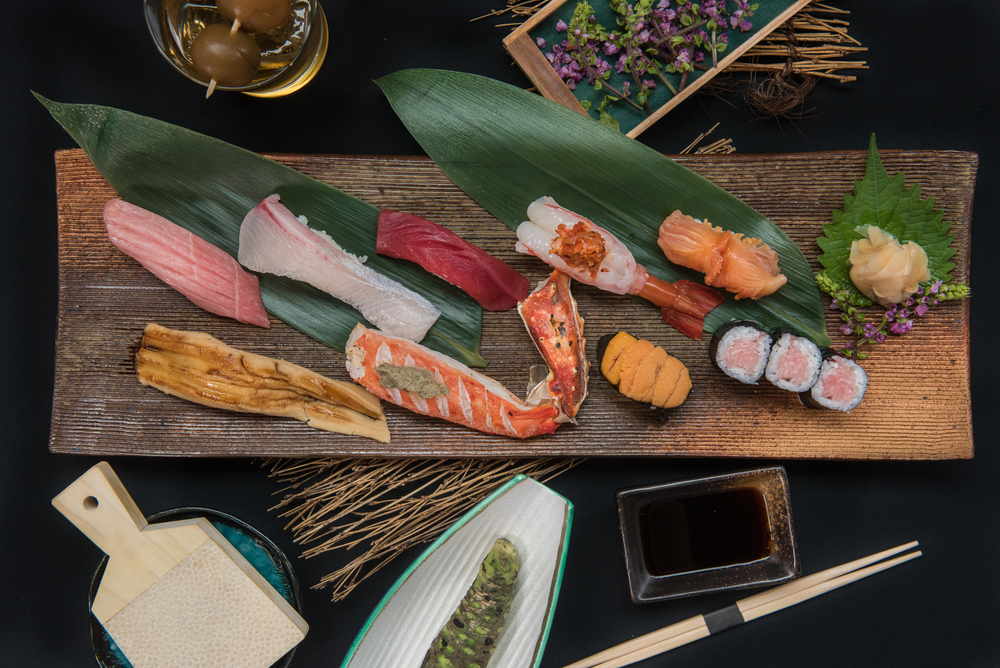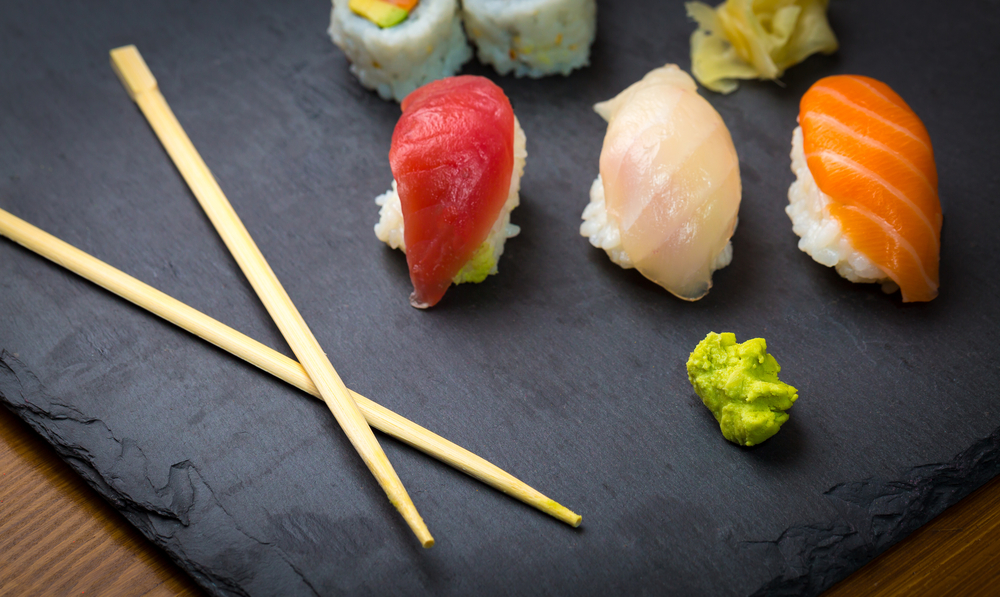Omakase Experience: How to Eat It?
The term ‘omakase’ translates to “I’ll leave it up to you” in Japanese. It’s a powerful concept that hands over complete control to the chef, allowing them to showcase their creativity and skill without any menu limitations. But what does this experience entail beyond just the quality and variety of the dishes?
Here we will dive deep into the art of eating omakase. Ensuring you encounter the feast in the true spirit of the custom, from your seating to your final bite.
Omakase Etiquette Guide: Your Path to a Respectful Experience
If you’re unfamiliar with Omakase, you may be curious about how it operates. You can trust that this guide on Omakase etiquette will help you feel comfortable as you explore the delectable and thrilling dining realm.
Reservations at a Quality Restaurant
Your omakase begins with the decision on where to eat. Researching and making reservations at a highly recommended restaurant is crucial for the experience you’re seeking. Quality often translates to a more knowledgeable staff, better ambiance, and superior ingredients. The extra effort of choosing a great establishment is the first step towards maximizing the potential of your omakase journey.
Information on Allergies, Dietary Restrictions, and Preferences
When making a reservation or arriving as a walk-in, kindly inform your server about any allergies, dietary restrictions, or preferences you may have. The staff will make every effort to accommodate your specific needs.
Guidelines for Attire
Most Omakase experiences fall under fine dining, so you are encouraged to dress up formally or semi-formally. For men, consider wearing slacks, a well-pressed shirt, and a blazer. Ladies may opt for a dress or a skirt paired with a blouse.
Engage with the Chef
The chef is the central figure of your omakase experience. Sitting at the bar is the best way to experience omakase, with the chef preparing and serving each dish right in front of you. This intimate setting allows you to see their craft up close and, when appropriate, engage in conversation. Respecting the chef and listening to their stories can make your dining experience more enjoyable.
Course Meal

One popular question is how many courses are in Omakase? In traditional Japanese cuisine, a full-course meal consists of an appetizer, sashimi course, grilled, simmered, steamed, deep-fried, and rice dishes. The final course is usually fruits or sweets. However, the number of courses can vary depending on the restaurant and chef’s style.
Pace Yourself
Omakase is not a sprint; it’s a marathon—an indulgent one at that. The chef will carefully curate the progression of dishes, often considering flavors, textures, and temperatures. Eating at the pace set by the chef is essential to appreciate the thought and effort that went into crafting your meal. This might mean you’ll be served sashimi before hot dishes to experience their natural flavors without your palate being influenced by the latter.
With Chopsticks or With the Hands?

If you are wondering if do you eat omakase with your hands, the answer is sometimes. Some dishes are meant to be eaten with chopsticks, while others, such as sushi and sashimi, can be eaten with your hands. Don’t worry about getting it wrong; if you’re unsure, observe how other diners eat their food.
Drinks to Accompany Your Meal
What to drink with Omakase is a common question you might encounter. Usually, the menu is already set for the occasion, which might include a recommended beverage pairing. If you want to elevate your experience even further, let the staff guide you in selecting a drink that will complement the flavors of each dish.
Keep an Open Mind
Leave any dietary restrictions, aversions, or preconceptions at the door with your coat. The beauty of omakase is in its surprise and variety. You may be introduced to ingredients and dishes you’ve never tried or even heard of.
Be open-minded. This is a chance to expand your culinary horizons and trust that the chef has a rhyme and reason for each selection.
Omakase Duration
Many people wonder how long does Omakase take, and the answer is it depends. The duration can range from 30 minutes to two hours, depending on the number of courses and your pace. Trust the chef’s timing and be mindful of other guests waiting for their turn to experience omakase.
Tipping
In Japan, tipping is seen as rude. In the US, it’s normal to tip 10-20% for great service after an Omakase meal. While sushi chefs may decline tips due to regulations, you can offer them to managers or include them when paying by card.
Seating Arrangements
Typically, diners will be seated at the counter to observe the chef’s skills and enjoy the sushi at its freshest. The food is presented as soon as the chef places it in front of the customers.
What Makes Omakase Significantly Pricier Than Standard Sushi?
The concise explanation: The higher cost of Omakase stems from its use of premium ingredients, the expertise of the chefs, and the unparalleled dining experience it offers. Omakase represents culinary art that chefs with exceptional skills meticulously craft. The pricing reflects a combination of these elements:
- Quality and Freshness: Omakase highlights premium ingredients known for unbeatable quality and freshness, enhancing the dining experience. The ingredients are often rare and exclusive from local and international suppliers.
- Chef’s Expertise: Experienced chefs craft personalized menus based on diner preferences and seasonal produce, showcasing their culinary skills. This leads to a unique combination of quality ingredients and expertly prepared dishes.
- Exclusive Experience: Omakase provides an intimate, exclusive dining experience. Chefs prepare dishes before diners, offering insights into ingredients and techniques, ensuring each course is unique and personalized.
Experience Unique Japanese Cuisine
An omakase meal is more than just a culinary experience; it’s an art form. Each step is meticulously planned to offer a unique journey through flavors, textures, and cultures. By following the etiquette, engaging with the process, and keeping an open spirit, you amplify the experience that the chef has worked to create.
As you finish your final course, take a moment to reflect on the meal. What flavors resonated with you the most? What techniques did the chef use that impressed you? Share your thoughts with friends, and start planning your return to the restaurant for the next omakase adventure. Or if you don’t feel like attending a restaurant, you can have the experience at home with the at-home Omakase option.
At Taki Omakase, we want to make your experience memorable, enjoyable, and delicious. We pride ourselves on using the freshest, highest-quality ingredients to deliver an unforgettable meal. Book your reservation now for a truly unique Japanese dining experience. So don’t wait any longer; come join us at Taki Omakase!
